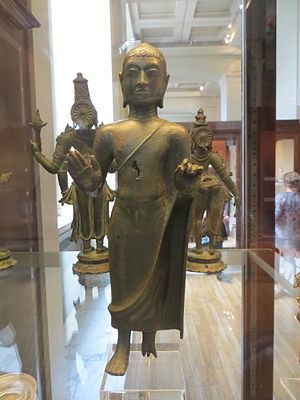Material Bronze Registration 1905,1218.1-15 | Created 6th-8th Centuries AD | |
 | ||
Similar British Museum, London Butterfly House, Arnos Grove tube station, St Sepulchre, St George the Martyr Southwark | ||
The Buddhapad Hoard or Buddam Hoard is a large cache of Buddhist sculptures found near the town of Buddam in Andhra Pradesh, southern India. Since 1905, it has formed an important part of the British Museum's South Asian collection. Dating from 6th-8th centuries AD, the style of craftsmanship fuses the northern influences of the Gupta period with the southern traditions of the Deccan, which in turn greatly influenced Buddhist art in South East Asia in subsequent centuries.
Contents
Discovery and original ownership
The hoard was discovered in the late nineteenth century and it was described by the colonial historian Robert Sewell in 1895. The artefacts was subsequently donated by the Secretary of State for India to the British Museum in 1905. Given the religious nature of the sculptures, the cache may have originally formed part of a ritual deposit from a Buddhist temple or monastery.
Description
The 6th-8th century hoard is composed of fifteen bronze Buddhist images, the vast majority of which are either statuettes or parts of small figures. There are three relatively intact standing statuettes of the Buddha (the largest of which is 38 cm high), 4 bronze arms, two bases for standing figures (one of which has a Brahmi inscription), a representation of the god Tirthankara, two small Buddha heads, two fragmentary figures of Parsvanatha and a bronze model of a stupa.
